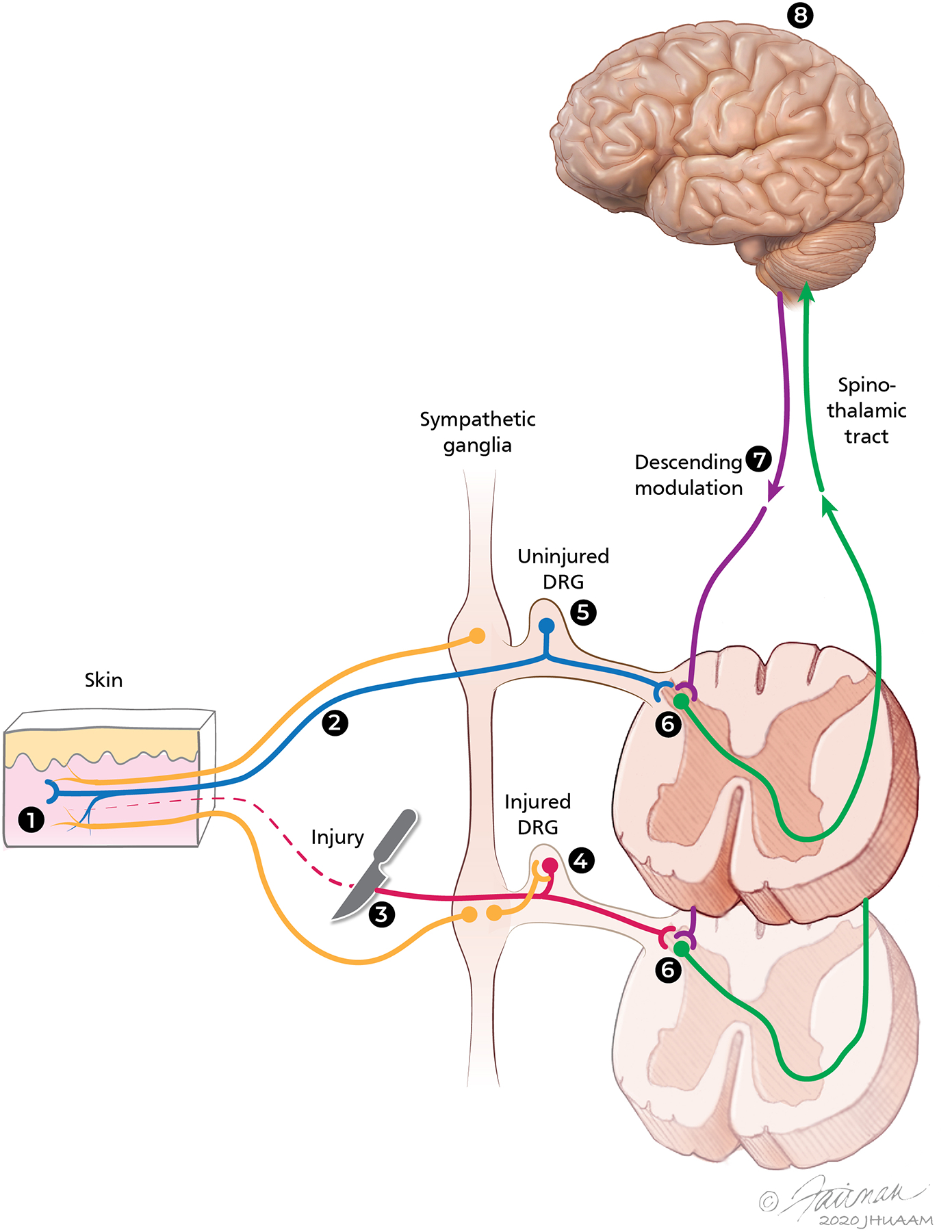Figure 1.

Sites along the peripheral and central nervous systems where pathophysiologic changes may contribute to the mechanisms of neuropathic pain. Different sites where physiologic and/or anatomic changes have been described in various models of neuropathic pain are shown: (1) Primary afferent nociceptors, (2) Axons in peripheral nerves, (3) Site of nerve injury, (4) Dorsal root ganglion (DRG) at the level of nerve injury, (5) Adjacent uninjured DRG, (6) Spinal dorsal horn at the level of injury and at adjacent levels, and (7) Descending modulatory systems: decrease of descending inhibition and/or increase of descending facilitation systems may contribute to the enhanced responsiveness of dorsal horn neurons. (8) Central mechanisms involve various sites in the brain, particularly in central neuropathic pain states. Post-ganglionic sympathetic efferent fibers that may influence the activity of neurons at the level of the injured DRG and enhance the responses of nociceptive afferents in the periphery are also shown.
